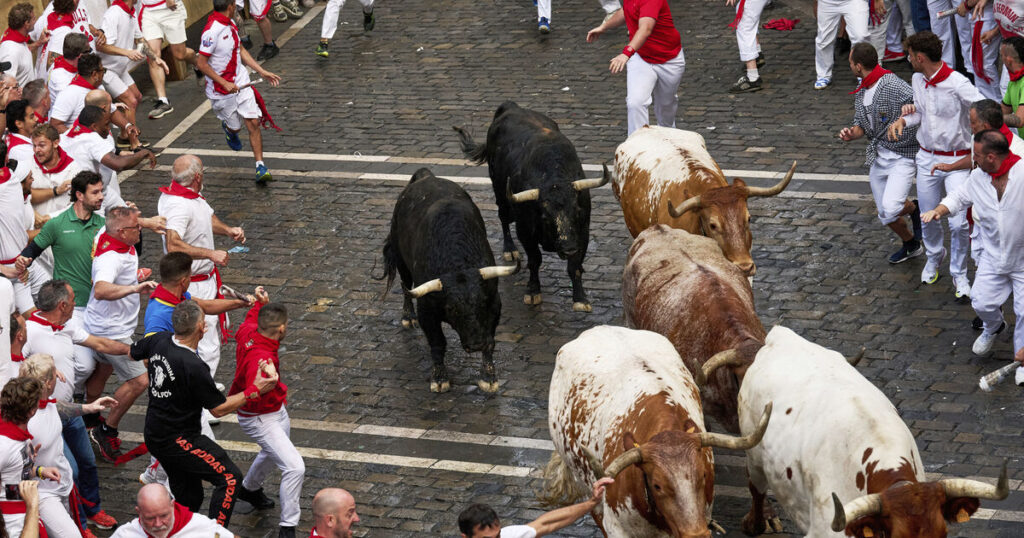Thousands of thrill-seekers dodged charging bulls in the opening run of the San Fermin festival on Monday, scrambling and falling to avoid the animals.
This marked the beginning of nine morning runs, a highlight of the renowned celebration in Pamplona, northern Spain.
Led by six steers, the bulls thundered through the city’s winding cobblestone streets. Each bull run sees participation from up to 4,000 individuals, covering a distance of 846 meters (2,775 feet) in approximately three to four minutes.
Participants typically wear the traditional white trousers and shirt, accented with a red sash and neckerchief. Experienced runners attempt to run briefly ahead of the bulls, daringly close to their horns, while teasing the animals with rolled-up newspapers.
Thousands of spectators observe the spectacle from balconies and behind wooden barriers along the route. Millions more watch the intense event on live television.
While gorings are not uncommon, injuries from falls and collisions are more frequent. Medical teams quickly attend to the injured, transporting those with serious injuries to hospitals.
Unofficial records indicate that at least 15 people have died in the bull runs over the last century. The deadliest day occurred on July 13, 1980, with four runner fatalities caused by two bulls. The most recent death was in 2009.
The remainder of each day is dedicated to festivities, including food, drink, dancing, and cultural events. These also include bullfights, where the bulls from the morning’s run are killed in the bullring by professional matadors in the afternoon.
The festival gained international recognition through Ernest Hemingway’s 1926 novel, The Sun Also Rises, which portrays the lives of American expatriates in Europe.


